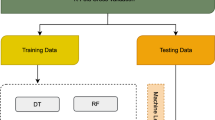Abstract
The cumulative sum (CUSUM) algorithm is proposed to detect the selfish behavior of a node in a wireless ad hoc network. By tracing the statistics characteristic of the backoff time between successful transmissions, a wireless node can distinguish if there is a selfish behavior in the wireless network. The detection efficiency is validated using a Qualnet simulator. An IEEE 802.11 wireless ad hoc network with 20 senders and 20 receivers spreading out randomly in a given area is evaluated. The well-behaved senders use minimum contention window size of 32 and maximum contention window size of 1 024, and the selfish nodes are assumed not to use the binary exponential strategy for which the contention window sizes are both fixed as 16. The transmission radius of all nodes is 250 m. Two scenarios are investigated: a single-hop network with nodes spreading out in 100 m×100 m, and all the nodes are in the range of each other; and a multi-hop network with nodes spreading out in 1 000 m×1 000 m. The node can monitor the backoff time from all the other nodes and run the detection algorithms over those samples. It is noted that the threshold can significantly affect the detection time and the detection accuracy. For a given threshold of 0.3 s, the false alarm rates and the missed alarm rates are less than 5%. The detection delay is less than 1.0 s. The simulation results show that the algorithm has short detection time and high detection accuracy.
Similar content being viewed by others
References
Bellardo J, Savage S. IEEE 802.11 denial-of-service attacks: Real vulnerabilities and practical solutions [C]. In: Proceedings of the USENIX Security Symposium. Washington DC, 2003. 15–28.
Raya M, Aad I, Hubaux J P et al. DOMINO: Detecting MAC layer greedy behavior in IEEE 802. 11 hotspots [J]. IEEE Transactions on Mobile Computing, 2006, 5(12): 1691–1705.
Hubaux J P, Buttyan L, Capkun S. The quest for security in mobile Ad Hoc networks [C]. In: Proceedings of ACM Symposium on Mobile Ad Hoc Networking and Computing (MobiHoc). Long Beach, CA, 2001. 146–155.
Buttyan L. Report on a working session on security in wireless Ad Hoc networks [J]. Mobile Computing and Communications Review, 2002, 6(4): 1–17.
Kyasanur P, Vaidya N H. Selfish MAC layer misbehavior in wireless networks [J]. IEEE Transactions on Mobile Computing, 2005, 4(5): 502–516.
Marti S, Giuli T J, Lai K et al. Mitigating routing misbehavior in mobile ad hoc networks [C]. In: Proceedings of Mobile Computing and Networking (Mobicom). Boston, MA, USA, 2000. 255–265.
Buchegger S, Le Boudec J Y. Performance analysis of the CONFIDANT protocol [C]. In: Proceedings of MobiHoc. Lausanne, 2002. 226–236.
Kyasanur P, Vaidya N. Detection and handling of MAC layer misbehavior in wireless networks [C]. In: Proceedings of International Conference on Dependable Systems and Networks. San Francisco, CA, 2003. 173–182.
Radosavac S, Baras J, Koutsopoulos I. A framework for MAC protocol misbehavior detection in wireless networks [C]. In: Proceedings of ACM Workshop on Wireless Security. Cologne, Germany, 2005. 33–42.
Page E S. Continuous inspection schemes[J]. Biometrika, 1954, 41(1): 100–115.
Ejaz Ahmed, Andrew Clark, George Mohay. A novel sliding window based change detection algorithm for asymmetric traffic [C]. In: IFIP International Conference on Network and Parallel Computing. Shanghai, China. 2008. 168–175.
Basseville M, Nikiforov I V. Detection of Abrupt Changes: Theory and Application [M]. Prentice Hall, New Jersey, 1993.
Brodsky B E, Darkhovsky B S. Nonparametric Methods in Change Point Problems [M]. Kluwer Academic Publishers, Netherlands, 1993.
ISO/IEC 802-11:1999(E). IEEE Standard for Wireless LAN Medium Access Control (MAC) and Physical Layer (PHY) Specification [S]. 1999.
Scalable Network Technologies. Qualnet Simulator Version 3.9 [EB/OL]. www.scalable-networks.Com, 2005-10-18.
Author information
Authors and Affiliations
Corresponding author
Additional information
Supported by National Natural Science Foundation of China (No. 60702038), National High Technology Research and Development Program of China (“863”Program, No. 2007AA01Z220) and Cultivation Fund of Innovation Project, Ministry of Education of China (No. 708024).
LIU Chunfeng, born in 1976, female, Dr, lecturer.
Rights and permissions
About this article
Cite this article
Liu, C., Shu, Y., Yang, O. et al. Detection of selfish behavior in wireless ad hoc networks based on CUSUM algorithm. Trans. Tianjin Univ. 16, 104–108 (2010). https://doi.org/10.1007/s12209-010-0018-1
Accepted:
Published:
Issue Date:
DOI: https://doi.org/10.1007/s12209-010-0018-1




